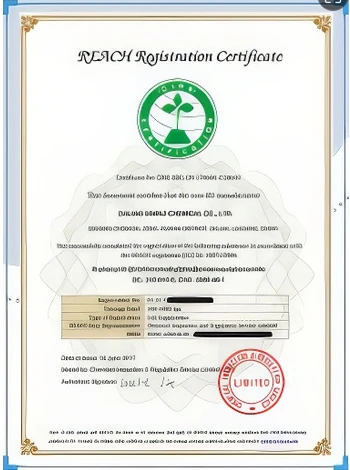



naoh 0.1 molar
Understanding 0.1 M NaOH A Comprehensive Overview
Sodium hydroxide (NaOH), commonly known as lye or caustic soda, is a highly versatile chemical that plays a critical role in various industrial and laboratory applications. One of the most common concentrations of sodium hydroxide used in laboratories is a 0.1 M (molar) solution. This article aims to explore the significance, preparation, and applications of 0.1 M NaOH.
What is Molarity?
Molarity is a measure of concentration that expresses the number of moles of a solute (in this case, NaOH) per liter of solution. A 0.1 M NaOH solution contains 0.1 moles of sodium hydroxide dissolved in one liter of water. This dilution is significant for various quantitative analytical procedures, including titrations and other chemical analyses.
Preparation of 0
.1 M NaOH SolutionPreparing a 0.1 M NaOH solution is a straightforward process, but it requires precision and safety precautions due to the caustic nature of sodium hydroxide.
1. Gather Materials You will need solid sodium hydroxide, distilled water, a volumetric flask, and protective equipment, including gloves and goggles. 2. Calculate the Amount Required The molar mass of NaOH is approximately 40 g/mol. To prepare 1 liter of 0.1 M NaOH, you will need 0.1 moles × 40 g/mol = 4 grams of NaOH. 3. Dissolve the NaOH Add the 4 grams of solid sodium hydroxide to a beaker containing about 800 ml of distilled water. Stir the solution until the sodium hydroxide is completely dissolved.
4. Transfer to Volumetric Flask Pour the solution into a 1-liter volumetric flask and add distilled water until the total volume reaches 1 liter. Ensure thorough mixing.
naoh 0.1 molar

5. Label the Solution Properly label the flask with the concentration, chemical name, and date of preparation to prevent any misuse or confusion.
Applications of 0.1 M NaOH
One of the primary uses of 0.1 M NaOH is in titrations, specifically acid-base titrations. It is commonly used to determine the concentration of acidic solutions. For instance, when titrating hydrochloric acid (HCl) with 0.1 M NaOH, the endpoint can be accurately detected using a suitable indicator, such as phenolphthalein, which changes color at the specified pH.
In addition to titration, 0.1 M NaOH is often used for calibrating pH sensors and electrodes. It serves as a standard solution to ensure accurate readings in various laboratory instruments. Furthermore, it can be employed in experiments involving the neutralization of acids, where its known concentration is crucial for quantitative analysis.
Safety Considerations
When working with 0.1 M NaOH, it is essential to prioritize safety. Sodium hydroxide is a strong base that can cause severe chemical burns. Always wear personal protective equipment, including gloves and safety goggles, and work in a well-ventilated area. In case of exposure, rinse the affected area with copious amounts of water and seek medical attention if necessary.
Conclusion
A 0.1 M NaOH solution is a fundamental reagent in various laboratory settings, mainly due to its versatile applications in titrations and analytical procedures. Understanding its preparation and handling is crucial for chemists and students alike. By adhering to safety protocols, we can effectively utilize sodium hydroxide in our experiments while minimizing risks.
-
Why Sodium Persulfate Is Everywhere NowNewsJul.07,2025
-
Why Polyacrylamide Is in High DemandNewsJul.07,2025
-
Understanding Paint Chemicals and Their ApplicationsNewsJul.07,2025
-
Smart Use Of Mining ChemicalsNewsJul.07,2025
-
Practical Uses of Potassium MonopersulfateNewsJul.07,2025
-
Agrochemicals In Real FarmingNewsJul.07,2025
-
Sodium Chlorite Hot UsesNewsJul.01,2025










